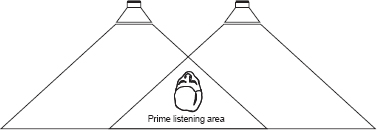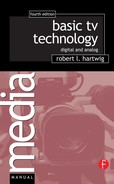Sound adds a lot to the picture.
Audio for Video
In the early years of TV, sound was not considered to be very important. Yes, you had to have sound, but not too much time was spent on it. That thinking has changed dramatically. With so many sources of entertainment and the advent of new sophisticated technology, sound, or audio, has become an important and complex component of any video production.
The Early Years
Although most people don't listen to music on AM radio today, if you have tuned in to AM, you had have probably noticed that the music doesn't sound as good as the music you listen to on your CD. It doesn't sound as bright or as alive. That's because at the time AM radio was developed the technology wouldn't allow us to record and reproduce the entire range of sounds that the human ear could hear. Sound is vibrations of the air, and the average ear can hear sounds between about 20 Hz and 15,000 Hz (vibrations per second). Early technologies allowed the recording of up to about 5000 Hz, so the brightness and the sparkle of music wasn't recorded and reproduced. In the late 1940s the technology was developed to record the full-frequency range that people can hear. In those days it was called high fidelity or hi-fi. Today full-frequency recording is normal and isn't given much thought.
Mono and Stereo
Your AM radio is also monaural or mono sound. Everything is on one channel and comes from one speaker. But we know that sound doesn't come from only one direction. It comes from everywhere. Stereophonic or stereo is a system that gives sound a location. It is sound that seems to come from different locations. Traditional stereo uses two channels and two speakers to carry the complete audio message. If you put one speaker on the left and the other on the right and sit between them, you can get the effect of stereo sound. If you put all of the violins on the left channel and they are played through the left speaker, it will sound like the violins are coming from the left side of the room. If you put all of the trumpets on the right channel and play them through the right speaker, it will sound like the trumpets are coming from the right side of the room. If you record the drums evenly on both channels and play them back on both speakers, it will sound like the drums are coming from the center of the room. If you record the piano so that 60% of its signal is on the left channel and 40% is on the right channel it will sound like the piano is coming from the left of center, but not all the way from the left. With traditional stereo you can place sound anywhere you like between left and right.
Mono uses one channel of sound through one speaker.

Stereo uses two channels of sound through two speakers to give sound location.

